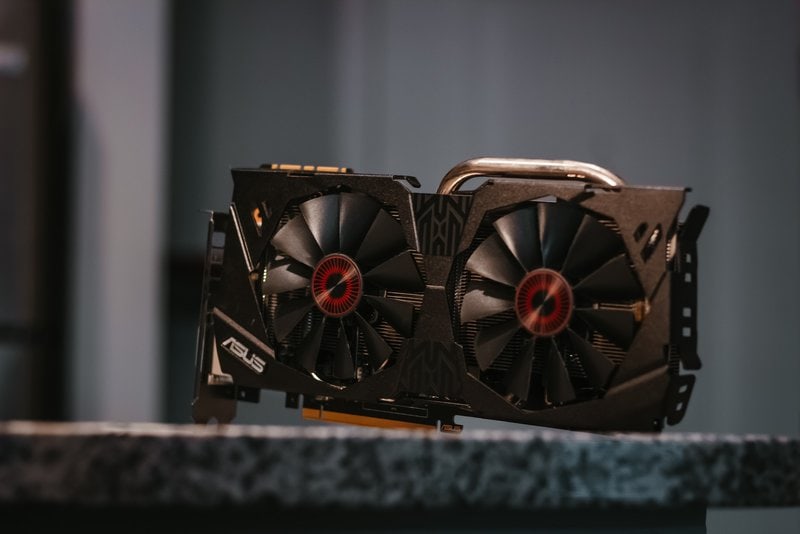Integrated Graphics Vs. Dedicated Graphics: Which To Choose

This article aims to provide an objective analysis of the choice between integrated graphics and dedicated graphics, assisting readers in selecting the most suitable solution for their needs.
Integrated graphics refers to a computer system that utilizes its central processing unit (CPU) for graphical processing tasks, eliminating the need for a separate graphics card. On the other hand, dedicated graphics involves employing a standalone graphics card specifically designed for this purpose.
To assess which option is preferable, this article will delve into various aspects such as performance comparison, cost considerations, energy efficiency, gaming capabilities, and suitability for video editing and graphic design. By examining these factors comprehensively without personal bias or subjective opinions, readers can make informed decisions based on their individual requirements.
It is important to note that while integrated graphics may offer cost-effective solutions with lower power consumption, dedicated graphics tend to deliver superior performance and enhanced visual quality. Ultimately, understanding these distinctions will empower individuals in selecting the optimal solution tailored to their computing needs.
Key Takeaways
- Integrated graphics use CPU for graphical processing and are cost-effective and space-saving.
- Dedicated graphics have their own processors and dedicated video memory, providing superior performance and advanced features.
- Integrated graphics are suitable for everyday tasks, while dedicated graphics are essential for demanding applications like gaming and video editing.
- When choosing a graphics solution, factors to consider include performance requirements, power consumption, compatibility, and budget constraints.
Understanding Integrated Graphics
Integrated graphics, also known as onboard graphics, refers to a system where the graphics processing unit (GPU) is integrated into the computer’s motherboard, allowing for basic visual capabilities without the need for a separate dedicated graphics card.
Integrated graphics are commonly found in low-end or budget computers due to their cost-effectiveness and space-saving design. These integrated GPUs typically share system memory with the CPU, which can lead to slower performance compared to dedicated graphics cards that have their own dedicated memory.
However, advancements in technology have resulted in improved performance and functionality of integrated graphics over time. While they may not be able to handle demanding tasks such as gaming or video editing as effectively as dedicated graphics cards, integrated graphics can still provide satisfactory performance for everyday tasks such as web browsing, word processing, and watching videos.
Exploring Dedicated Graphics Cards
When considering the various options for enhancing graphical performance, it is important to explore dedicated graphics cards as a potential solution. Dedicated graphics cards are separate hardware components specifically designed to handle graphics processing tasks.
Unlike integrated graphics, which rely on the computer’s CPU and share system memory, dedicated graphics cards have their own processors and dedicated video memory. This allows them to handle complex visual calculations and render high-quality graphics more efficiently.
Dedicated graphics cards also offer superior performance in demanding applications such as gaming or video editing, where real-time rendering and high frame rates are essential. Additionally, dedicated graphics cards often support advanced features like multiple monitor setups, virtual reality technology, and hardware acceleration for software applications that utilize GPU computing.
Overall, dedicated graphics cards provide a significant boost in graphical performance compared to integrated solutions.
Performance Comparison: Integrated vs. Dedicated Graphics
A comprehensive evaluation of the graphical performance in terms of efficiency, capabilities, and advanced features reveals a clear distinction between integrated solutions and dedicated graphics cards.
Integrated graphics, also known as onboard or shared graphics, are built into the computer’s processor. They offer basic graphical capabilities but are limited in terms of power and performance.
On the other hand, dedicated graphics cards are separate components that provide higher processing power, advanced features like real-time ray tracing, and better gaming experiences. Dedicated graphics cards have their own dedicated memory and processing units specifically designed for handling complex graphical tasks. This allows them to handle high-resolution gaming, video editing, and 3D rendering with ease.
In summary, while integrated solutions may be suitable for everyday tasks and casual gaming, dedicated graphics cards are essential for demanding applications that require superior graphical performance.
Cost Considerations and Energy Efficiency
Considering the financial aspect, it is important to take into account the cost and energy efficiency of different graphics solutions. When comparing integrated graphics with dedicated graphics, there are several cost considerations to keep in mind.
Firstly, integrated graphics are typically included as part of the central processing unit (CPU), which means that there is no additional cost for a separate graphics card.
On the other hand, dedicated graphics require an additional investment as a standalone component.
Secondly, integrated graphics tend to consume less power compared to dedicated graphics cards. This can result in lower electricity bills and reduced environmental impact.
Lastly, integrated graphics often have lower performance capabilities than dedicated cards, which may affect their suitability for certain tasks such as gaming or video editing.
Gaming Capabilities of Integrated Graphics
One crucial aspect to explore in the realm of graphics solutions is assessing the gaming capabilities of integrated graphics.
Integrated graphics, also known as onboard or shared graphics, are built into the computer’s motherboard and share system memory for processing graphical data. While dedicated graphics cards are typically preferred for gaming due to their higher processing power and dedicated video memory, integrated graphics have made significant advancements in recent years.
Modern integrated graphics can handle less demanding games and older titles reasonably well, providing a satisfactory gaming experience for casual gamers or those on a tight budget. However, they may struggle with more graphically intensive games that require high frame rates and detailed visuals.
It is important to consider the specific requirements of the games one intends to play before deciding between integrated and dedicated graphics solutions.
Video Editing and Graphic Design with Dedicated Graphics
When it comes to video editing and graphic design, having a dedicated graphics card provides the necessary processing power and memory to handle complex visual tasks efficiently and effectively. Here are five reasons why dedicated graphics are ideal for these creative endeavors:
- Enhanced performance: Dedicated graphics cards have their own processors and memory, allowing them to handle demanding tasks without impacting the overall system performance.
- Faster rendering: The powerful GPUs in dedicated graphics cards can accelerate rendering times, resulting in quicker production turnaround.
- Multiple displays: Many dedicated graphics cards support multiple monitors, allowing designers to work on different projects simultaneously or have a larger workspace.
- Specialized software support: Dedicated graphics cards often come with optimized drivers for popular software used in video editing and graphic design, enhancing compatibility and performance.
- Real-time editing capabilities: With dedicated graphics, designers can make changes or apply effects in real-time, giving them instant feedback on their work.
Dedicated graphics provide the necessary tools for video editing and graphic design professionals to create visually stunning content efficiently.
Factors to Consider When Choosing a Graphics Solution
To make an informed decision on the most suitable graphics solution, it is crucial to carefully evaluate various factors that contribute to the overall performance and capabilities of the chosen option.
One important factor to consider is the level of performance required for the intended tasks. Integrated graphics are generally sufficient for basic tasks such as web browsing and word processing, while dedicated graphics are better suited for more demanding applications like gaming or video editing.
Another factor is power consumption. Integrated graphics tend to consume less power compared to dedicated graphics, making them a more energy-efficient choice for laptops or portable devices.
Additionally, compatibility with software and hardware should be taken into account. Some specialized software or hardware may require specific graphic card features that only dedicated graphics can provide.
Lastly, budget constraints play a significant role in decision-making since integrated graphics are typically more affordable compared to dedicated options.
Considering these factors will help individuals choose a graphics solution that best suits their needs and preferences without overspending on unnecessary features.
Making an Informed Decision: Integrated or Dedicated Graphics
Considering the specific requirements and demands of your intended tasks, it is essential to carefully evaluate the available options and make an informed decision regarding the most suitable graphics solution for your needs. Integrated graphics and dedicated graphics both have their advantages and limitations, so it is crucial to weigh these factors before making a choice.
Here are three key aspects to consider:
- Performance: Dedicated graphics cards generally offer higher performance capabilities compared to integrated graphics. They have their own dedicated memory and processing power, making them better suited for resource-intensive tasks such as gaming or graphic design.
- Power consumption: Integrated graphics are typically more energy-efficient than dedicated graphics cards. This can be advantageous for laptops or other devices where battery life is a concern.
- Cost: Integrated graphics come built-in with the CPU, so they do not require additional investment. On the other hand, dedicated graphics cards can be quite expensive, especially if you opt for high-end models.
By evaluating these factors in light of your specific needs and budget constraints, you can make an informed decision on whether integrated or dedicated graphics will best suit your requirements.
Frequently Asked Questions
Can integrated graphics be upgraded or replaced with a dedicated graphics card?
No, integrated graphics cannot be upgraded or replaced with a dedicated graphics card. Integrated graphics are built into the computer’s motherboard and cannot be removed or modified without replacing the entire motherboard.
Are there any specific software requirements for using integrated graphics?
There are no specific software requirements for using integrated graphics. However, some applications or games may demand more advanced graphics capabilities, in which case a dedicated graphics card would be necessary.
How does the size of a dedicated graphics card impact its performance?
The size of a dedicated graphics card can impact its performance. Larger cards tend to have more powerful processors and greater memory capacity, allowing for better processing and rendering of complex graphics and high-resolution images.
Are there any limitations or compatibility issues when using integrated graphics for virtual reality (VR) gaming?
Using integrated graphics for virtual reality gaming may have limitations and compatibility issues due to their lower performance capabilities compared to dedicated graphics cards. Dedicated graphics cards are typically recommended for an optimal VR gaming experience.
Can dedicated graphics cards be used for tasks other than gaming and graphic design, such as data visualization or machine learning?
Dedicated graphics cards can be used for tasks other than gaming and graphic design, such as data visualization or machine learning. They offer high processing power and specialized capabilities that make them suitable for these computationally intensive tasks.





